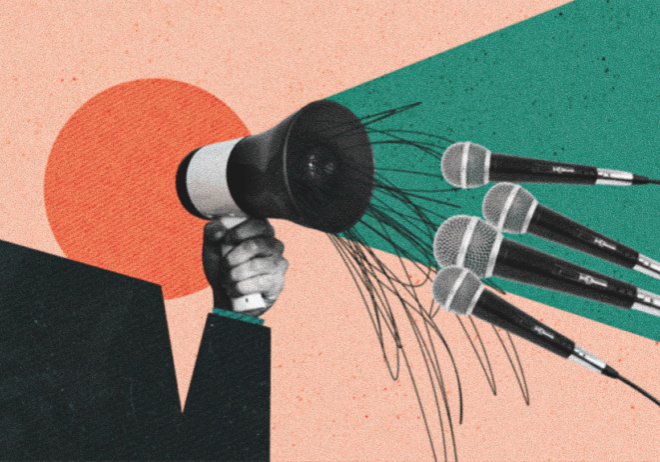
What Brands Need to Know About The Rise of AI-Powered Advertising
In the modern advertising landscape, AI plays a crucial role. Almost every online ad you encounter is delivered to you in real-time with the help of AI. Major ad platforms like Google Ads and Meta Ads use AI-powered advertising to sell, target, and place ads across vast networks of digital destinations. Essentially, AI determines the visibility of your ads and the cost of reaching audiences on popular ad platforms. For instance, Meta’s AI considers ad frequency and relevancy to set prices and display rates on Facebook and Instagram.
Therefore, AI plays a significant role in the success or failure of ads, presenting both a challenge and an opportunity for advertisers. AI-powered platforms allow for running numerous ad variations to specific audiences at scale, but human professionals struggle to keep up with the data and create enough variations to optimize campaigns effectively.
Instead of fully utilizing the potential of digital advertising, many advertisers launch basic campaigns that often underperform. However, there is an opportunity to leverage AI tools to keep up with AI-powered platforms. These tools can generate creative assets, target audiences precisely, scale campaigns, conduct tests, and even run campaigns autonomously.
Charting the increased use of AI in advertising
AI is increasingly reshaping how brands engage with their audience through advertising. 60% of marketers already use AI to optimize ad campaigns, with that number expected to grow. Programmatic advertising uses AI and machine learning to automate ad purchasing, placement, and optimization, targeting specific audiences and increasing conversion rates.
Real-time bidding algorithms analyse data to display the most relevant ads to users instantly. AI allows for personalized and contextually relevant ads, improving user experience and campaign effectiveness. With the growing need for customized marketing experiences, AI is becoming essential in advertising to deliver personalized content at scale.
AI can help advertisers optimize their ad spending by predicting consumer behaviour and identifying the best channels and messaging strategies. By utilizing AI algorithms, advertisers can identify patterns in consumer data, optimize bidding strategies, and allocate resources efficiently, resulting in maximizing ROI and minimizing wasteful spending.
AI also automates tasks, allowing marketers to focus on creative endeavours and strategizing. AI-generated content can revolutionize ad creation and delivery by quickly generating variations, testing them, and optimizing for maximum impact. AI enhances ad targeting and segmentation by identifying specific audience segments and delivering personalized ads, leading to increased engagement levels, higher conversion rates, and improved ROI.
Ultimately, integrating AI into advertising is crucial for brands to remain competitive in today’s landscape.
What can AI-powered advertising really do?
AI, or artificial intelligence, involves machines that are programmed to think and learn like humans. In advertising, AI improves data processes, speeds up decision-making, and boosts campaign efficiency. Advertisers are using AI to target their messages better, increase customer engagement, and drive conversions.
Predictive analytics: anticipating consumer behaviour
Predictive analytics is a significant impact of AI on advertising. By analyzing large datasets of consumer behavior, preferences, and market trends, brands can predict the future actions of their target audiences.
Case Study: Starbucks
Starbucks uses AI-driven predictive analytics to personalize customer experiences and enhance marketing effectiveness. By collecting data on customers’ purchasing habits through its mobile app, Starbucks can predict what items users may like and create targeted promotions. This personalized approach has increased customer engagement and boosted sales.
Personalized content creation: The new standard
Another essential aspect of AI in advertising is personalized content creation. Brands can create tailored ads that resonate with users by using data to understand audience preferences and behaviors, leading to a stronger relationship between brands and consumers.
Case Study: Netflix
Netflix uses AI algorithms to personalize content recommendations for viewers. By analyzing past viewing behavior and preferences, Netflix creates personalized advertisements that cater to individual users, improving user experience and increasing viewer retention rates.
Automated ad placements grow efficiency at scale
AI automates ad placements through programmatic advertisements, removing manual oversight and focusing on algorithms to determine the best collateral, target audience, and timing for campaigns.
Case Study: Unilever
Unilever uses AI-driven programmatic ad placement to optimize its digital advertising strategies. By analyzing multiple variables in real-time, Unilever minimizes ad waste and improves campaign precision, leading to better ROI for advertising spends.
The future of AI-powered advertising
In the future of advertising, AI will play a significant role in shaping the industry. Chatbots using NLP will provide customer support and boost sales through conversational marketing. Computer vision technology will analyse visual content for better ad targeting. Predictive analytics driven by AI will help advertisers anticipate consumer behaviour and adjust their strategies.
AI will allow for personalized ad experiences and optimize ad placement for maximum effectiveness. Emotion recognition capabilities will help refine ad content for better resonance with consumers. Overall, AI will transform how advertisers connect with their audiences and help them stay ahead of the competition.
Elevator pitch
AI-powered advertising offers brands exciting opportunities to enhance their marketing efforts with predictive analytics, personalized content, and automated ad placements. By embracing these technologies, brands can increase customer engagement and deliver more relevant messaging. It is crucial for brands to stay informed and invested in AI tools to stay ahead in the competitive marketplace and meet the evolving demands of consumers.

